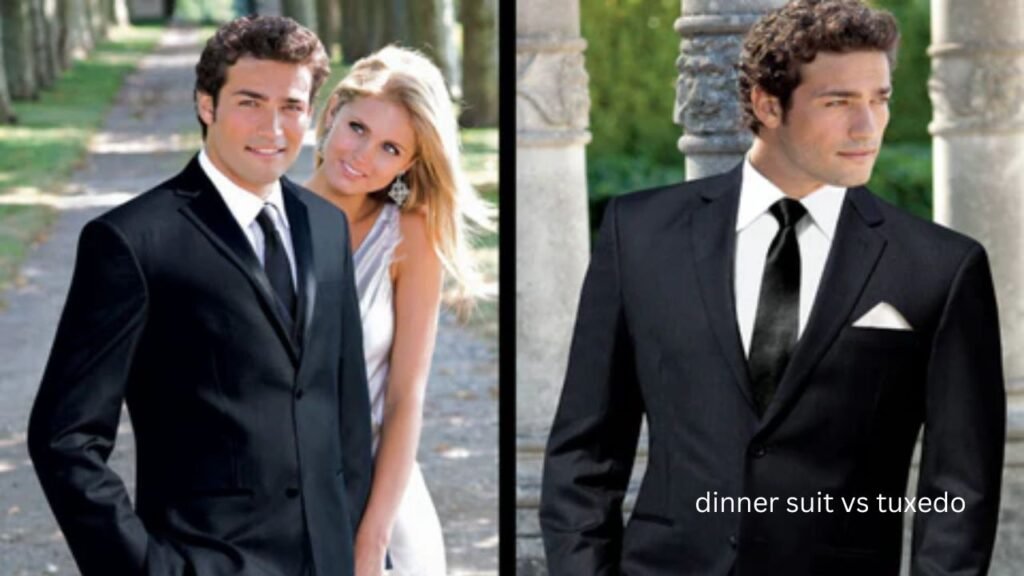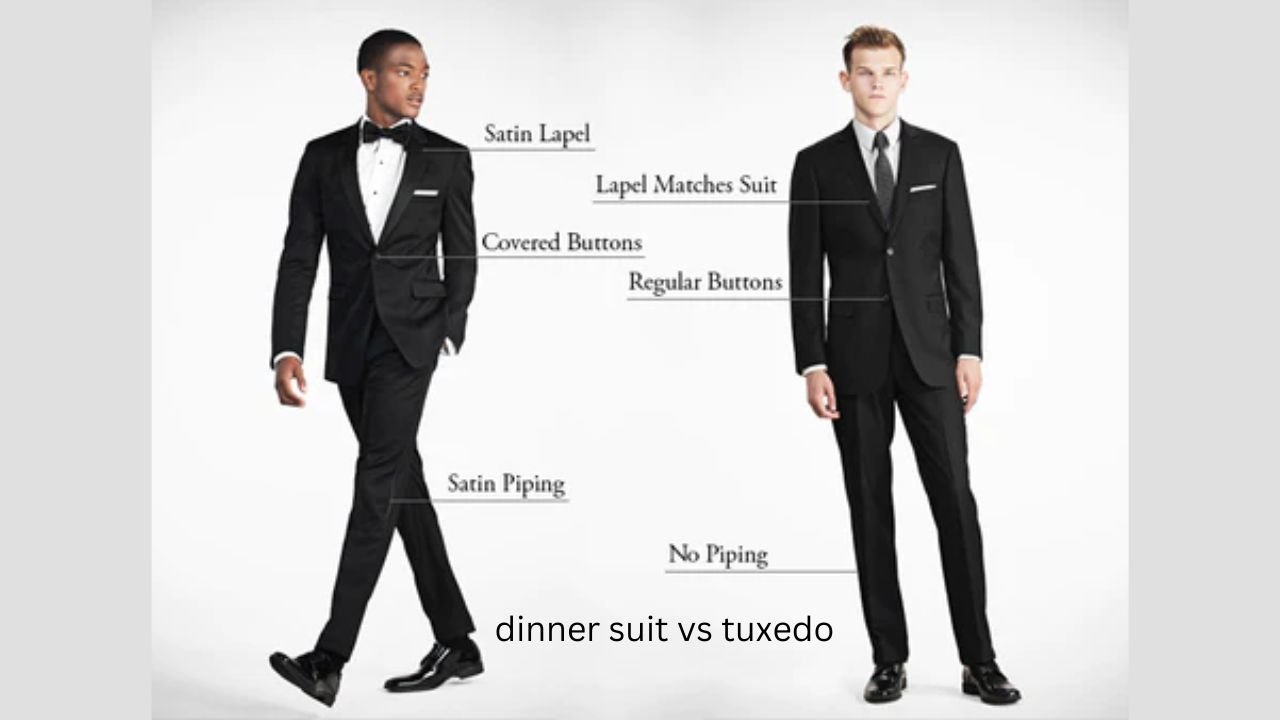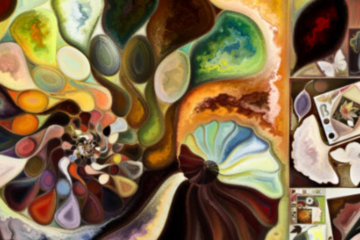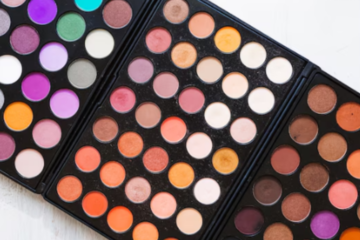Introduction for dinner suit vs tuxedo
When it comes to formal attire, one common question arises: what distinguishes a tuxedo from a suit? While some may think it’s simply about color or adding a bow tie, there’s more to it. Let’s break down the key differences between a tuxedo and a suit so you can make the right choice for your next black-tie event.
Table of Contents
Is It a Tuxedo or a Dinner Suit?
In the UK, what’s referred to as a tuxedo in the US is often called a dinner suit. Essentially, both terms describe the same formal attire. However, the term “tuxedo” has become more popular in global usage, especially for formal events requiring black-tie dress codes.
Suit or Tuxedo: What’s the Real Difference?
Although both a tuxedo and a suit are sophisticated options, the tuxedo has a more refined, formal edge. The primary difference? Satin. Tuxedos or dinner suits feature satin accents, which can typically be found on the lapels, buttons, and pockets. On some tuxedos, like our navy texture jacket, the satin matches the color of the fabric, enhancing the elegance. Suit jackets, on the other hand, lack this satin detailing, making them slightly less formal by comparison.
Additionally, tuxedos often have a slight sheen on the main fabric, which adds to their luxurious feel. In contrast, standard suits are usually made from matte fabrics, maintaining a more understated appearance.
Lapels: A Key Indicator
Lapels are a crucial aspect where suits and tuxedos can overlap. Both can have notch or peak lapels, though peak lapels are considered dressier, giving the tuxedo a more formal look. However, what truly sets tuxedos apart is the shawl lapel—a smooth, unbroken curve running from the collar to the waist. You’ll only find this style on tuxedos, making it a distinctive feature for formal occasions, like our tailored fit shawl lapel tuxedo.
Buttons and Fastenings
Another subtle but important difference between a dinner suit vs tuxedo is the button style. Tuxedos typically feature a single-button fastening, while suits commonly have two buttons. The general rule is that fewer buttons on a jacket make it more formal. Whether you choose a tuxedo or a suit, both can come in double-breasted styles, but the overall look and the details like satin and lapels will help you determine which category it falls into.
How to Style a Tuxedo the Classic Way
When attending a black-tie event, following the dress code is essential. Fortunately, styling a tuxedo for such occasions is straightforward if you stick to the traditional guidelines.
The classic combination for your tuxedo is a crisp white dress shirt. This shirt can feature either white or black buttons and sometimes comes with pleats down the front for a more formal look. Opt for a classic collar, as wing collars are reserved for white-tie events. Don’t forget cufflinks, as your shirt will likely have double cuffs.
Next, complement your tuxedo with a bow tie. While black is the safest and most traditional choice, you can make a statement by choosing a larger or more colorful bow tie to add personality to your outfit. To complete your accessories, add a white pocket square—whether folded flat for a minimalist look or styled with a neat ruffle for a touch of elegance. A cummerbund is an optional accessory, traditionally worn with tuxedos, but it’s not mandatory for a classic black-tie look.
To finish off your outfit, select a pair of polished dress shoes, either in matte or patent leather. Make sure to give them a good shine the night before the event to ensure a sleek, polished appearance.
Dinner Suit vs Tuxedo: How to Personalize Your Black-Tie Look

While rules are helpful, personal style can elevate your black-tie ensemble beyond the typical tuxedo. In the debate of dinner suit vs tuxedo, the key is to add your own twist while maintaining the elegance of the occasion.
For a modern take on the tuxedo, try swapping the traditional black jacket for a trendy jewel-toned one, such as a burgundy velvet dinner jacket. This adds a rich, luxurious feel while still being appropriate for a formal setting. Alternatively, you can reverse the monochrome look by pairing a white dinner jacket with a black shirt. This unexpected contrast keeps your outfit sharp while introducing a new level of interest.
If you prefer a more relaxed yet still sophisticated look, consider replacing the classic shirt and bow tie with a fine wool rollneck sweater. This option is not only stylish but also incredibly comfortable, perfect for those who want to break from tradition while still looking refined.
Weaving a Tale: Dinner Suit vs. Tuxedo – Material and Occasion Guide

Material Differences Between Dinner Suits and Tuxedos
When it comes to fabric, tuxedos are easily distinguished by their satin accents, typically found on the lapels, buttons, and pockets. Tuxedos are crafted from luxurious materials like wool, cotton, rayon, and polyester blends, which provide them with their signature sheen. Additionally, tuxedos often incorporate felt stiffeners beneath the collar to maintain a sleek, structured appearance. These premium fabrics and accents give tuxedos their elegant, polished look.
Dinner suits, on the other hand, are more versatile in terms of fabric selection. Common materials include wool, cotton, linen, and various blends that cater to different seasons. The feel of a suit can vary greatly depending on the material—wool suits tend to be sturdier, while cotton and linen suits are softer and more breathable. High-end dinner suits may also feature refined details such as metal or bone buttons, adding to their sophisticated appeal.
Event Etiquette: When to Wear a Dinner Suit vs. Tuxedo
The choice between a dinner suit and a tuxedo largely depends on the formality of the event, dress code, and overall etiquette. The material and design of each outfit are tailored to match different levels of formality. However, modern fashion trends have blurred the lines between the two, allowing for more flexibility.
In general, tuxedos are the go-to for:
- Black-tie events and other highly formal occasions
- Members of the wedding party, such as the groom and groomsmen
- Exclusive galas or balls
- Prestigious award ceremonies
- Ballet or opera premieres
Conversely, dinner suits are ideal for a broader range of occasions, including:
- Business meetings and professional conferences
- Wedding guests and attendees
- Funerals
- Graduation ceremonies
- Semi-formal dinner parties
- Religious services
- Court appearances
- Casual social gatherings
The Wedding Dilemma: Dinner Suit vs. Tuxedo
Deciding between a dinner suit and a tuxedo for a wedding can be challenging, especially given how similar they might appear at first glance. Both offer a refined and elegant aesthetic, but the decision largely hinges on the formality and timing of the event.
If you’re part of the wedding party, it’s always best to check with the groom regarding the dress code. A black-tie wedding often requires tuxedos to maintain uniformity, especially for evening ceremonies. Tuxedos are traditionally associated with evening events, offering a sleek and formal look that suits nighttime settings.
If the wedding does not specify a black-tie dress code, a dinner suit is an excellent choice. A well-tailored black dinner suit paired with a tie can strike the perfect balance between formality and personal style, making it appropriate for most weddings.
By carefully considering the material, occasion, and etiquette, you’ll be able to make an informed decision on whether a dinner suit or tuxedo is the right fit for your event. No matter the choice, both offer timeless sophistication.
FAQs: Dinner Suit vs. Tuxedo
1. What is the primary difference between a dinner suit and a tuxedo?
- The most notable difference is the satin detailing. Tuxedos typically have satin on the lapels, buttons, and pocket trim, while dinner suits do not. Dinner suits offer more fabric options and are less formal compared to tuxedos.
2. Can I wear a dinner suit to a black-tie event?
- Black-tie events traditionally require a tuxedo. However, a well-tailored dinner suit in black, paired with a formal tie or bowtie, can sometimes be an acceptable alternative if the event is less strict about dress codes.
3. Are tuxedos only worn at night?
- Tuxedos are generally reserved for evening events, especially those with black-tie dress codes. For daytime events, a dinner suit is a more appropriate choice.
4. Can I wear a dinner suit to a wedding?
- Yes, dinner suits are a versatile option for weddings, especially if the dress code is semi-formal or less formal. However, if the wedding is black-tie, a tuxedo may be required.
5. What kind of shoes should I wear with a tuxedo or dinner suit?
- Tuxedos pair best with patent leather shoes for a polished, formal look. Dinner suits, depending on the occasion, can be worn with a range of footwear, from polished leather shoes to more casual options like loafers, for less formal events.
6. Can I accessorize a dinner suit like a tuxedo?
- You can add accessories to both, but tuxedos typically feature more formal accessories such as bowties, cufflinks, and cummerbunds. Dinner suits offer more flexibility with accessories, allowing for both formal and semi-casual looks depending on the event.
7. Is a black suit the same as a tuxedo?
- No, a black suit lacks the satin details found on tuxedos. It’s a more versatile and less formal option compared to the structured, satin-trimmed style of a tuxedo.
Conclusion: Making the Right Choice Between Dinner Suit and Tuxedo
Choosing between a dinner suit and a tuxedo boils down to the formality of the occasion, the time of day, and your personal style. Tuxedos exude elegance and are traditionally reserved for formal, evening events with strict dress codes, such as black-tie affairs. On the other hand, dinner suits are versatile and can be styled for both formal and semi-formal occasions, making them a practical yet stylish option for many events.
By understanding the key differences in fabric, embellishments, and occasion-specific requirements, you can confidently select the right attire that not only fits the event but also allows you to express your personal style. Whether you opt for the sleek look of a tuxedo or the adaptability of a dinner suit, both ensure a polished and timeless appearance.
You can see latest news and updates at: Secret Class



